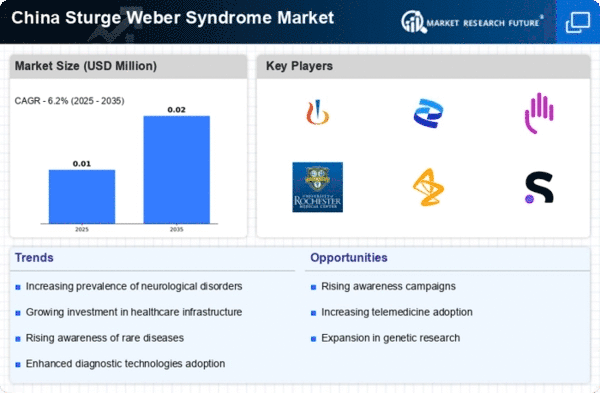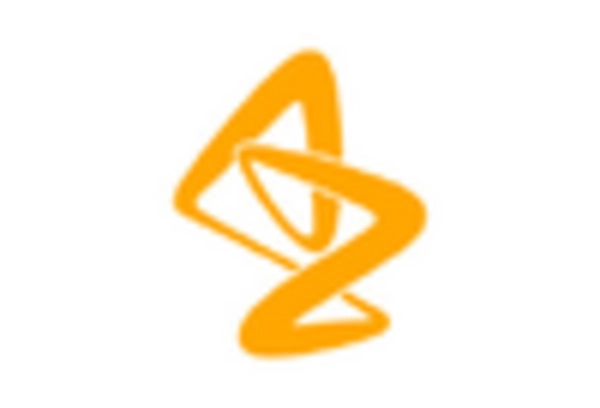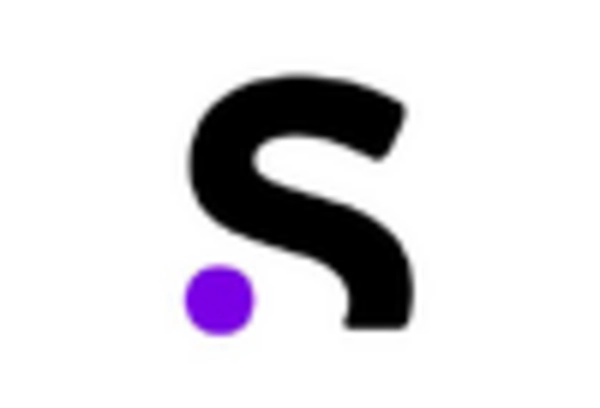Enhanced Diagnostic Capabilities
The enhancement of diagnostic capabilities in China is a pivotal factor influencing the sturge weber-syndrome market. With the integration of advanced imaging technologies, such as MRI and CT scans, healthcare providers can now diagnose Sturge Weber Syndrome more accurately and at earlier stages. This improvement in diagnostic precision is crucial, as it allows for timely intervention and management of the condition. As diagnostic tools become more accessible and affordable, the likelihood of early detection increases, leading to a larger patient base seeking treatment. Consequently, this trend is expected to bolster the sturge weber-syndrome market, as early diagnosis often correlates with better treatment outcomes.
Government Initiatives and Funding
Government initiatives aimed at improving healthcare access and funding for rare diseases are significantly impacting the sturge weber-syndrome market. In China, the government has implemented various policies to support research and development in rare diseases, which includes Sturge Weber Syndrome. Increased funding for healthcare infrastructure and research grants is likely to enhance the availability of treatment options. For instance, the Chinese government allocated approximately $1 billion in 2023 for rare disease research, which could lead to breakthroughs in therapies for Sturge Weber Syndrome. Such initiatives not only foster innovation but also encourage pharmaceutical companies to invest in the development of new treatments, thereby expanding the sturge weber-syndrome market.
Advancements in Treatment Modalities
Recent advancements in treatment modalities for Sturge Weber Syndrome are poised to drive the market forward. Innovative therapies, including targeted drug delivery systems and minimally invasive surgical techniques, are emerging as effective options for managing the symptoms associated with the syndrome. The introduction of novel pharmacological agents has shown promise in clinical trials, potentially improving patient outcomes. As these advancements gain traction, healthcare providers in China are likely to adopt these new treatments, leading to an increase in market demand. The sturge weber-syndrome market is expected to benefit from these developments, as they offer hope for better management of this complex condition.
Growing Research and Clinical Trials
The surge in research and clinical trials focused on Sturge Weber Syndrome is a critical driver for the market. In China, numerous institutions are actively engaged in studying the pathophysiology and treatment options for this condition. The increasing number of clinical trials, which have reportedly doubled in the past five years, indicates a robust interest in understanding and addressing the needs of affected patients. This research not only contributes to the scientific community's knowledge but also paves the way for the development of new therapies. As more effective treatments emerge from these studies, the sturge weber-syndrome market is likely to experience significant growth.
Increasing Incidence of Sturge Weber Syndrome
The rising incidence of Sturge Weber Syndrome in China is a notable driver for the sturge weber-syndrome market. Recent studies indicate that the prevalence of this condition is approximately 1 in 20,000 live births, which suggests a growing patient population requiring specialized care. This increase in cases necessitates enhanced healthcare services and treatment options, thereby expanding the market. Furthermore, as awareness of the syndrome grows among healthcare professionals and the public, more patients are likely to seek diagnosis and treatment. This trend is expected to drive demand for innovative therapies and interventions, ultimately contributing to the growth of the sturge weber-syndrome market in China.

















Leave a Comment